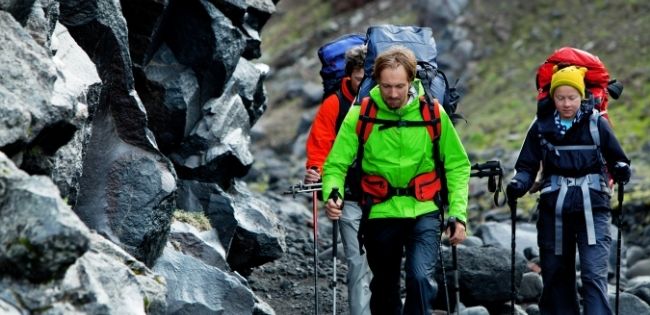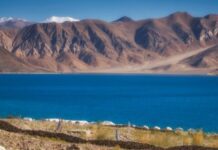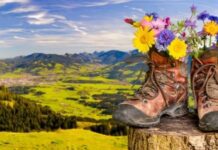Overview
If you’re going trekking in India, the Roopkund trek is a must-do! Everything is working in its favor. Deep virgin forests, gurgling brooks, breath-taking campsites, miles of undulating meadows, snow, and ice, and the taste of a great adventure as you ascend from 8,000 to 16,000 feet in six days.


Roopkund, India’s most popular trek, is almost picture-perfect. The Roopkund trail ascends through magnificent dark forests before bursting into Ali and Bedni Bugyal, India’s most beautiful high altitude meadows. The trail quickly exits the meadows and enters spectacular alpine stretches. Climbing on snow to Roopkund Lake is an adrenaline rush.
When at a higher altitude, the beautiful Mt Trishul looms over the scene, getting closer as you climb higher. Some of the features of this trek are given below.
Gehroli’s thick oak forests
The trail enters the deep oak forests of Gehroli Patal on the first day. All you’ll hear on a quiet day is the rustling of dry leaves, wind whistling through the branches, and birds cooing among the foliage. The climb takes approximately 3-4 hours before arriving at your campsite. You camp in a clearing in the middle of the forest, surrounded by ancient oak trees. The evening light on these trees and Mt Trishul, which peeks over the horizon, is stunning.
The trek is unbeatable because of the meadows
The two massive alpine meadows of Ali Bugyal and Bedni Bugyal will astound you. It’s almost as if you’ve walked into the famous Windows XP wallpaper. Throughout the trek, you’ll be treated to breathtaking views of Mt Trishul and Mt Nanda Ghunti. On the Roopkund trek, you can see the imposing Chaukhamba range, Neelkanth peak, Kedarnath, Kedar Dome, and several other high risers in addition to these two.
A fantastic dose of adventure
With several steep climbs and slippery but fun descents, the Roopkund trek provides just the right amount of adventure. No roller coaster can match the adrenaline rush of walking along a sharp, exposed ridge towards Junargali while holding onto a rope. Although the weather and time of day play a role in this part of the climb, if you want to be within breathing distance of Mount Trishul and Nanda Ghunti, this is the place to be.
Aside from all of this, Roopkund Lake has an air of mystery about it. Anthropologists, scientists, and historians have all been drawn to the 300 human skeletons at 15,750 feet. Trek this trail and let our local guides (who also happen to be fantastic storytellers) tell you suspenseful tales about the lake and the trail itself.
How to Get There
This trek begins in Kathgodam, a small town in the Uttarakhand district of Nainital. It is only accessible by railways and roadways, which are the only two ways to reach this lovely clandestine settlement. The nearest airport is Pantnagar Airport, which is 71 kilometers away; you will need to rely on road transportation or rails to get to Kathgodam. The Kathgodam Railway Station has connected to all major cities by standard trains thanks to well-connected rail systems. You can also take a private or state-run bus from Nainital, Rudrapur, Moradabad, Chandausi, Haridwar, Rishikesh, or Delhi.
The base camp
Kathgodam, located in the Himalayan Kumaon Ranges, is a lovely place to enjoy nature and cultural heritage. A ride from here will take you through picturesque narrow roads to Loharjung, your base camp for this trekking expedition. This small village sits on the crest of a hill and offers a beautiful view of the Niagara valley. It has a height of 2300 meters and will dazzle you with its vibrant sights. It has a few lodging options and restaurants, as well as a few small shops where you can buy necessities. Your adventure begins here and will enchant you beyond your wildest dreams.
The best time to go
The Roopkund Trek takes you from the charming Kathgodam Township to Roopkund via Loharjung, Didina, Bugyal, Lotani, and Bhagwabasa. Summers last from April to June, with temperatures falling below 30°C thanks to a moderate climate that lasts for most of the year. Winter lasts from December to February and can be brutal, with temperatures dropping below freezing. The months of July to November are considered ideal for visiting, with cool, pleasant winds that allow you to experience nature’s best-kept secret of the Himalayas.






















